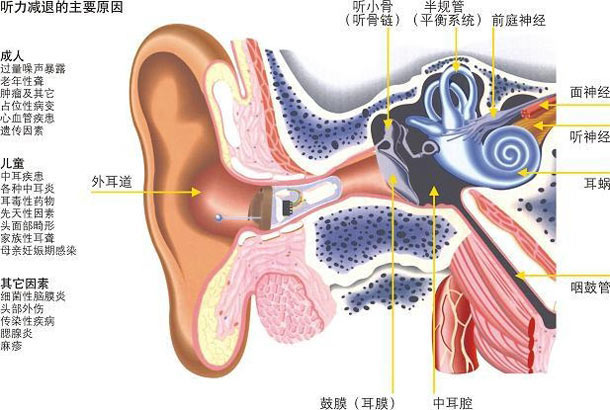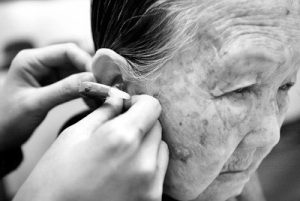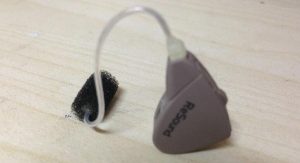The human ears are located in the crotch area on either side of the head. Its main function relies on two important organs: one is the auditory organ that receives the incoming sound from the outside world – the cochlea and the auditory nerve connected to it (also known as the cochlear nerve); the other is the organ that helps the body maintain balance – the vestibule and Semi-regulatory tubes, connected to them are vestibular nerves. Send sensory information to the auditory nerve center and vestibular nerve center of the brain. This series of devices. Therefore, the nerve that completes the function of the ear is also referred to as the (sense) auditory (sense) nervous system.
The auditory organ is a very sensitive microphone. It not only can sense the sound, but also make a specific analysis of the sound signal, such as the direction of the sound source, the size of the sound intensity, the quality of the sound, the frequency and so on. For example, an experienced train patrol worker can judge whether the machine is operating normally or where the fault is located by the sound of the train running and the sound of the metal being knocked. In addition, in daily social activities, human beings need to communicate with each other, exchange ideas, and live together through the voice of language. Not to mention listening to music and enjoying the sounds of nature.

The process of producing auditory functions is complex, and a brief introduction is given below. First, the auricle collects the external sounds into the external auditory canal. The slightly curved external auditory canal transmits the sound waves to the deep tympanic membrane. Sound waves of different intensities and different frequencies cause the tympanic membrane to vibrate at different amplitudes, connecting the other side of the tympanic membrane. The three ossicles (hammer, anvil, and tibia) are chained to each other and continue to transmit sound waves to the oval window connected to the humerus, causing the lymph in the window to cause fluctuations, stimulating the vitality in the lymph. The structure of the membrane cochlea – the basement membrane, and the surface of the basement membrane has many sensory cells (hair cells), which are connected with many tiny terminals of the auditory nerve, and the stimuli generated by the sound are transmitted to the auditory center of the ankle through the auditory nerve conduction for analysis and treatment. The human body responds according to the sound heard.
The simple process of balancing function is as follows: one of the elliptical sac and the balloon in the vestibule of the bone has a plaque, also called a plaque, and their positions are perpendicular to each other to sense the acceleration of the plane from the various planes when the gravity changes. Variety. The ampullas in the three semi-regular tubes, which are also perpendicular to each other, are responsible for the stimulation of the angular acceleration of the human body in any direction in the space. However, there are mutual adjustment and synergy between the three balance organs of the elliptical sac, the balloon and the semicircular canal. They are all connected to the vestibular nerve and transmit stimuli to the vestibular center, the vestibular nuclei near the brainstem.
The vestibular center has a wide range of connections with other nervous systems, such as the cerebellum, the eye movement nucleus, the limb movement center, the autonomic nervous system, and the cerebral cortex. Therefore, other systems may also cause corresponding reactions due to inappropriate vestibular stimulation, such as: dizziness, nystagmus, dumping, balance disorders, and autonomic responses – nausea, vomiting, pale complexion, and unstable blood pressure.
In addition, human beings are living on land. The general activities are front, back, left and right and up and down, while animals in the air and water are up, down, front, back, left, right, rolling, pitching and rotating. Therefore, the vestibule of fish and birds The function is much better than that of human beings. Relatively speaking, human daily activities are more concerned, and the changes in body position are neither large nor fast, so the stimulation of the vestibular organs is limited compared with other animals living on land.
Jinghao medical hearing aid reminder:Hearing aids need to be professionally “fitted”. It is very important to choose a professional hearing aid fitting center and hearing aid fittings! You can call the Jinghao medical for any hearing problems, or you can come to the center to experience the experience. . Hearing aid free consultation phone: +86-18566295705
You can also scan our WeChat public account for more information about hearing.

Link:Human ear structure and main functions
REF: Bluetooth Hearing Aids, Hearing Aids Types, Digital Hearing AidsThe article comes from the Internet. If there is any infringement, please contact [email protected] to delete it.



